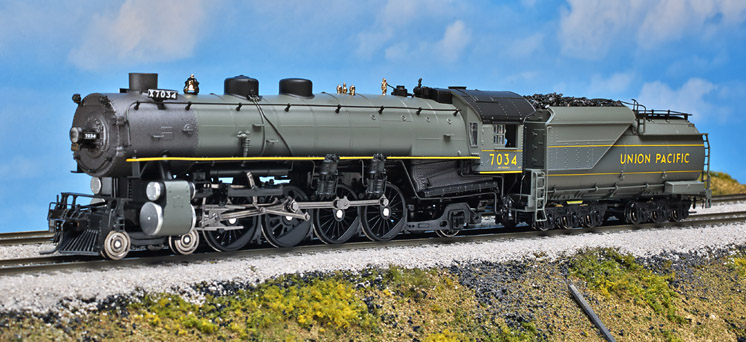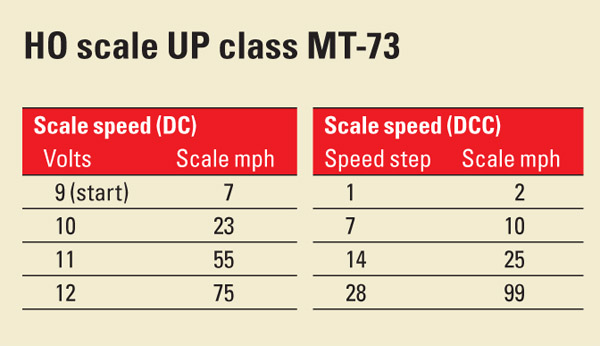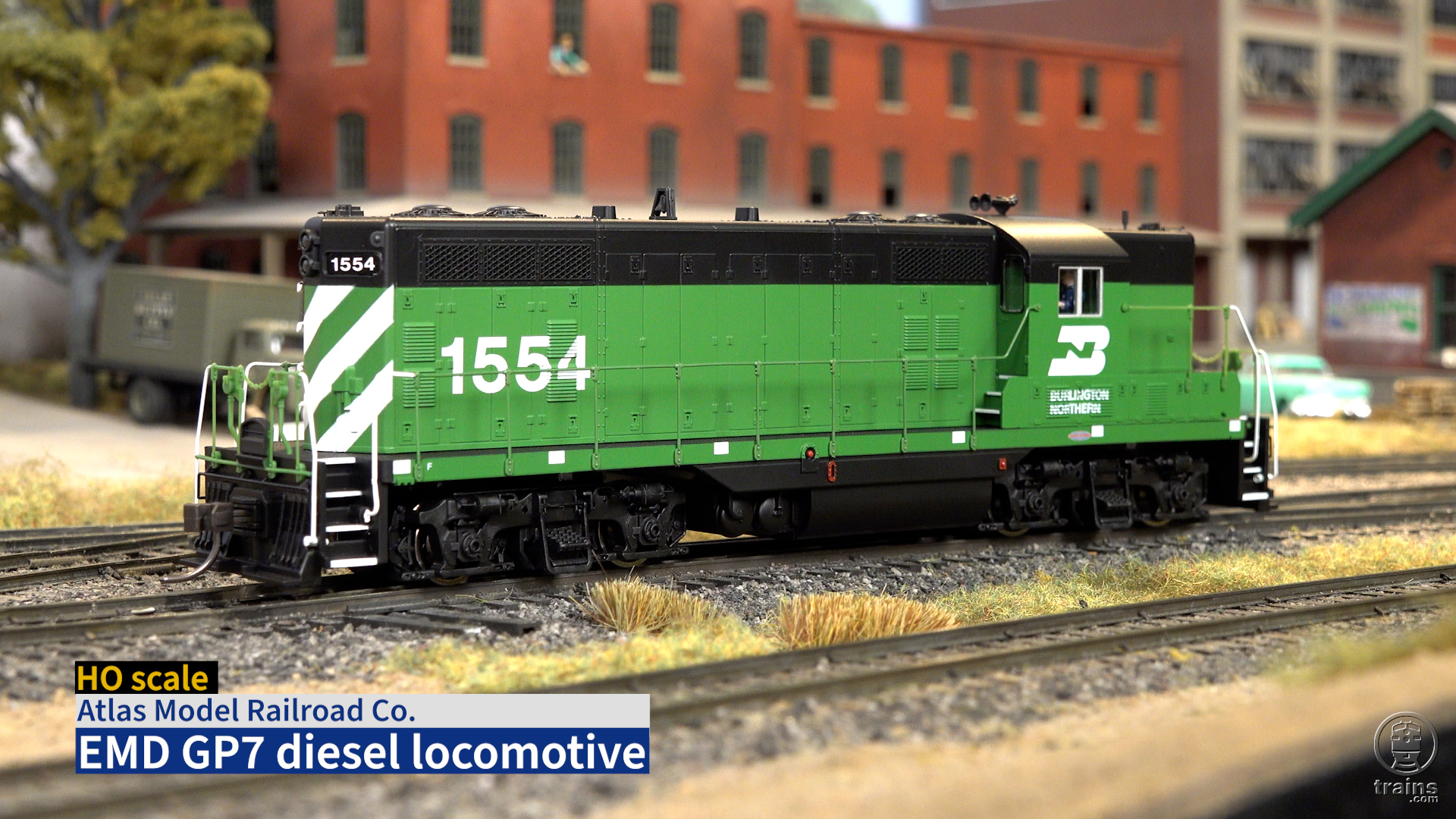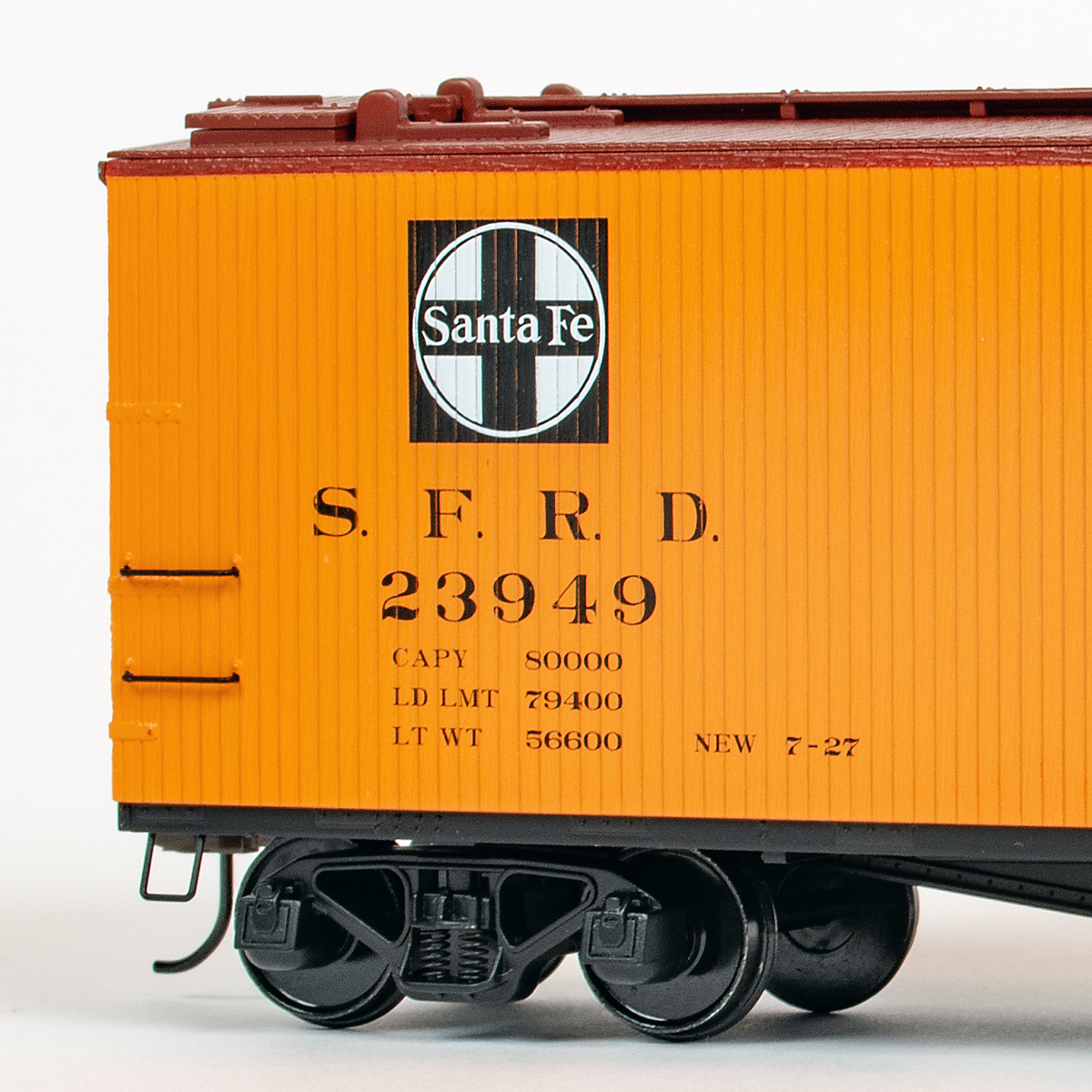The prototype. By the 1920s, as passenger trains became heavier and schedules became faster, the Union Pacific RR needed a more powerful replacement for the 2-8-2 Mikados hauling varnish between Cheyenne, Wyo., and Ogden, Utah. The American Locomotive Co. provided a solution with a 4-8-2 Mountain type with 73″ drivers and 54,838 pounds of tractive effort.
Alco delivered the first 40 coal-burning versions, nos. 7000-7039, in 1922. Oil-burning versions for the UP subsidiary Los Angeles & Salt Lake, numbered 7850 to 7864 and 7865 to 7869, followed in 1923 and 1924 respectively. While it served as backup power to the early diesels that headed the Forty-Niner between Cheyenne and Ogden, MT-73 no. 7002 wore a brown, red, and yellow shroud over its boiler from the late 1930s until 1942.
With the introduction of the 4-8-4 FEF classes in the 1940s, the railroad downgraded the Mountains to secondary trains. Some of the 4-8-2s soldiered into the 1950s until the last MT-73 met the scrapper’s torch in 1956.
Rivets, boiler bands, and seams in the boiler jacket are well-defined and correctly placed. Separate detail parts abound on the BLI model, including flexible plastic handrails, sand lines, and whistle cord. On the prototype, the railroad added an Automatic Train Control box under the front right running board in 1930 and an additional air pump in 1936. Both of these details are included on the BLI model.
Our sample wears the two-tone gray livery that the UP applied to its passenger-service steam locomotives in the late 1940s. Color separation is sharp and the placement of the lettering and stripes matches prototype photos. The Harriman classification under the road number is legible and correct.
The vinyl traction tires on the last two drivers and the weight of the frame give the MT-73 an impressive amount of pulling power. During a hill climb test, the model hauled 8 HO scale passenger cars up a 3 percent grade. On straight and level track, the engine should easily pull a complete UP passenger consist.
A drawbar connects the locomotive and tender. A wire harness connected to the DCC decoder in the tender plugs into a socket on the rear of the cab under the folding cab apron.
During test runs, the model’s sound and smoke system was most impressive. The exhaust is perfectly timed to four chuffs per wheel revolution. The puffing smoke is also mechanically timed to the exhaust sound and rotation of the drivers. Eight drops of smoke fluid provided a steady white plume of smoke that lasted for more than two hours. The smoke can be shut off via DCC function 7 or a slide switch under the cab.
The chuff varies in intensity with the load or manually with function keys. To simulate the locomotive drifting downgrade, I pressed F6 until the chuffs were barely audible.
Other user-triggered functions include the bell, air pump, and coupler crash. There’s a coupler slack effect that can be used as the locomotive is starting out with a train in tow. The whistle has a low, deep tone that sounds like the one on UP 4-8-4 no. 844.
In DCC I could program the various sound effects, including setting individual as well as overall volume levels.
A modeler can also remap function keys, which is useful for those with throttles that have fewer than 28 function keys. A printed booklet is included with the model, and a more detailed technical manual is available on the BLI website as a free download.
Like all Paragon2 models, this locomotive includes a “macro” recording feature in DCC. Using function keys, the modeler can record the locomotive performing a specific sequence of movements and sound effects that can then be played back. For example, it’s possible for the locomotive to haul a train and make station stops on “auto pilot,” while the modeler runs another locomotive to perform switching duties.
DC performance. After some fine-tuning, the dual-mode Paragon2 decoder performed reliably on our direct-current test track. For access to the model’s user-controlled functions and programming capabilities, I recommend using a BLI DCMaster (available separately for $49.99), which is a sound controller/
programmer that connects between the track and DC power pack.
Out of the box, the MT-73 didn’t start moving on our DC test track until I applied 9 volts of track power. However, after lowering the analog starting voltage (CV252) to a value of 70 and the analog sound start voltage (CV131) to a value of 1, the model started creeping along at 6.5 volts. The sound system stayed constant when I flipped the direction switch.
For those modeling the late steam era on the Union Pacific, the MT-73 should be a welcome addition. It’s an accurate, smooth-running model of a passenger workhorse.
Manufacturer
Broadway Limited Imports, LLC
9 East Tower Circle
Ormond Beach, FL 32174
www.broadway-limited.com
Road numbers/Versions
- Two-tone gray with coal tender: 7034 and 7029
- Two-tone gray with oil tender: 7021 and 7861
- Black with coal tender: 7036 and 7038
- Black with oil tender: 7010 and 7013
- Unlettered versions of both paint schemes available.
Era (as detailed): 1947 to early 1950s (two-tone gray), 1936 to 1956 (black)
Features
- Die-cast metal locomotive chassis
- Drawbar pull: 4 ounces, equivalent to 18 HO scale free-rolling passenger cars on straight and level track
- Dual-mode Paragon2
- sound decoder
- Electrical pickup on six drivers and all tender wheels
- Five-pole skew-wound motor with brass flywheel
- Golden-white light-emitting diode headlight
- Metal Kadee-compatible knuckle couplers on pilot and rear of tender
- Minimum radius: 22″
- Synchronized smoke unit
- Traction tires on rear drivers
- Weight: 1 pound 2.4 ounces,
- 13.2 ounces (engine only)

















